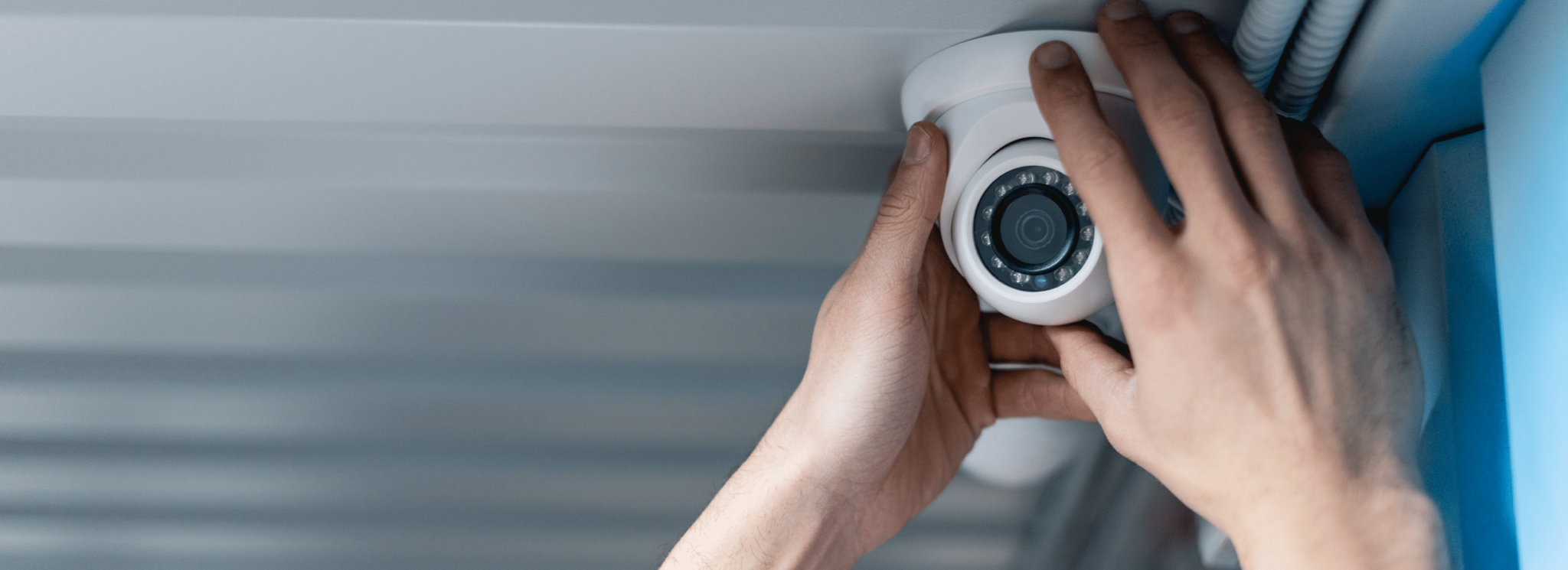In 2019, the U.S. saw the highest number of workplace deaths since 2007 according to the National Safety Council. While safety should be a priority every day, this month’s National Safety Month provides a reminder to stay on top of it. Companies have a responsibility to create a safe space for everyone who interacts with them.
All businesses — including commercial properties, retail centers, construction sites, apartment buildings, and warehouses — have controls in place to prevent injuries and protect employees, visitors, tenants, and clients. Everyone in a business stays busy with their job responsibilities.
It doesn’t take much for them to forget safety practices and let their guard down. That’s why it’s critical for companies and their leaders to stay on top of current best practices for safety. The steps you take can help protect and secure your business and apartments, as well as minimize damage and prevent accidents.
Here are 9 tips for maximizing safety and security that apply to every business.
1. Follow OSHA’s recommendations
The U.S. Department of Labor Occupational Safety and Health Administration (OSHA) has safety guidelines that affect every business. A great place to start is with OSHA’s Recommended Practices for Safety and Health Programs.
One important component of a strong safety program is to involve employees, commercial property tenants, and apartment residents in the process. They are the best resources for identifying hazards and finding a better way to prevent them. The guide has a lot of valuable resources, such as policy, model programs, reporting, incident investigation, case studies, and more.
You’ll find resources specific to your business. If you’re in construction and warehousing, you’ll be interested in the “Effective Hearing Conservation Program Elements” and the construction safety guide. For small businesses, there’s also a special handbook with resources.
2. Create and maintain a health and safety policy
When you don’t have a documented health and safety policy, then no one will enforce them. Documenting the policy is the first step, but it can’t be the last step. An equally important step is to educate people on the policy, follow it, and stay on top of it, which brings up the next item.
3. Make security awareness training mandatory
Security is everyone’s job. Once you’ve established a policy, train all employees and residents on that policy and have them sign off on it. Companies that have the best safety and security records hold regular training sessions and refreshers.
As tempting as it is, don’t send policies by email or share a link. Employees, residents, and tenants will ignore it or file it away without ever reading it. Training and online video training will ensure employees learn and understand the policies.
New employees should undergo security awareness training as part of the new employee onboarding process. Current employees should receive the training at least once a year. Regular training reduces the possibility of a lapse in processes and procedures while keeping everyone vigilant.
4. Conduct a security risk assessment
A security risk assessment captures the strengths and weaknesses in your safety and security program. The risk assessment involves reviewing who comes and goes on the property. You’ll need processes for entering and exiting the building as well as social distancing when it’s needed.
You’ll analyze the property to document vulnerabilities for internal and external theft, trespassing, vandalism, safety risks, and other issues. After reviewing the property, draw its layout to mark current security measures.
It would be worth the investment to hire a security consultant to do the assessment. They know how to do the process quickly and efficiently. They won’t miss anything. People who do it themselves that aren’t security experts can end up costing the company more.
5. Create a medical preparedness plan
We hope another pandemic won’t occur in our lifetimes. However, we must learn from this one and be prepared for the next contagious illness. Besides, we still have other spreadable illnesses and reducing risk will decrease absenteeism.
A medical preparedness plan spells out what to do when someone on the property becomes sick. It will also outline the steps for closing the building due to a medical emergency.
6. Watch the property for problems
Your business can do everything right only to have safety fall apart with one action or inaction. An employee who allows someone to piggyback into the building unnoticed has put the business at risk. Not maintaining the lawn can lead to overgrown shrubs and trees creating hiding places. A light burns out and if no one replaces it, you’ve given criminals an advantage.
The easiest and most efficient way to watch for these things is with security cameras. It doesn’t take much for safety problems to appear with people coming and going every day. A video surveillance system that combines artificial and human intelligence can quickly spot potential problems and act on them before anything happens.
Video surveillance can help boost fire protection. While it can’t stop fire, security cameras can help with early detection. The earlier the cameras find the problem and report them, the sooner the problem can be extinguished before it becomes a big problem. The same goes for flood monitoring. Video surveillance can watch for potential flooding especially after a cold spell or severe weather conditions.
7. Control access
An easy way to control access is with an access control system. It allows people to enter the property while limiting access to areas or rooms in the building. People simply use their badges to enter the garage and enter the building.
Unlike other automated entry systems, an access control system tracks who accesses any area at any time. Integrating access control with video surveillance can enhance your security and safety because you can verify who entered a room at a certain time.
8. Check exterior lighting
Lighting is one of the easiest things to do that can have a big impact on security and safety. Do a review of your exterior lighting. This includes everything from the entrances and parking lots to the walkways and stairwells. This will help ensure everyone always feels safe when walking around your property.
People are surprised to learn that brighter doesn’t always mean it’s the best lighting option. You may want to consider bringing in a security consultant to do a review of your lighting to optimize it. The consultant will study the light placement and the type of lighting used.
It’s especially critical to verify that all lights work and use the proper type of bulb. Video surveillance stays on top of the lighting and can report anything that breaks. Ask the consultant whether motion-activated lights would be a good idea for your property. It can scare away intruders by instantly shining a spotlight on them.
The consultant can inspect how much lighting you have and ensure you don’t have too little or too much. Too little leads to shadowy spots while too much leads to wasteful spending.
9. Secure your parking lot and garage
Parking security needs as much attention as the building. Unfortunately, parking security is often lacking. Violent crimes in the parking area as well as the sidewalk, street, alley, and highway comprise 25 percent of all violent crimes per FBI’s Crime Data Explorer.
To secure your parking area, verify you have proper lighting in all areas including the stairwells. If you use video surveillance, post “Area under surveillance” signs with a picture of a video surveillance camera. These signs can deter some crimes.
Parking garages tend to be drab and grey. That creates a dark setting. Paint the walls white with reflective or glossy paint to improve lighting. If the parking lot or garage has columns, paint them too.
Security Tips for Your Industry
Every industry has different security requirements. Even two companies in the same industry won’t have the same security plan because their properties and locations are different. Select your industry from the following list to learn more about its security.
- Construction site security
- Retail security
- Manufacturing and industrial security
- Scrap metal and recycling security
- Apartment and multi-family housing security
- Automotive security
Again, June is National Safety Month. What are you going to do to optimize safety in your business? The next section can help you figure out how to enhance security for your business.
How to Choose the Right Security
Video surveillance technology continues to advance and become more effective and affordable. Experienced companies that specialize in video surveillance constantly find better ways of protecting the property.
You want to find a security company that has a relationship with law enforcement. That’s because the security company will most likely get a fast response every time they contact the police. Stealth Monitoring has relationships with police departments across the U.S. and Canada.
The right security solution for your business depends on your requirements. While it’s a challenge to determine the return on security investment (ROSI), ROSI cannot measure the cost of peace of mind for clients, employees, residents, vendors, and visitors. You also can’t measure the value of avoiding negative publicity that comes with crimes, injuries, and death that occurs on a company’s property.
There is no such thing as cookie-cutter security. The best security for your business is one tailored to your industry and property. To help you in your search for security, check out this list of questions to ask a video surveillance vendor. Visit the vendor’s website. Look for security videos and testimonials. To find out how you can optimize security for your company and yield the fastest ROI, please contact us.

